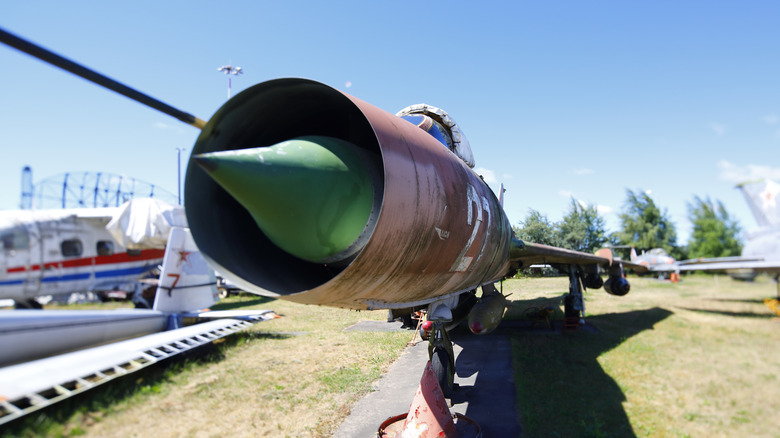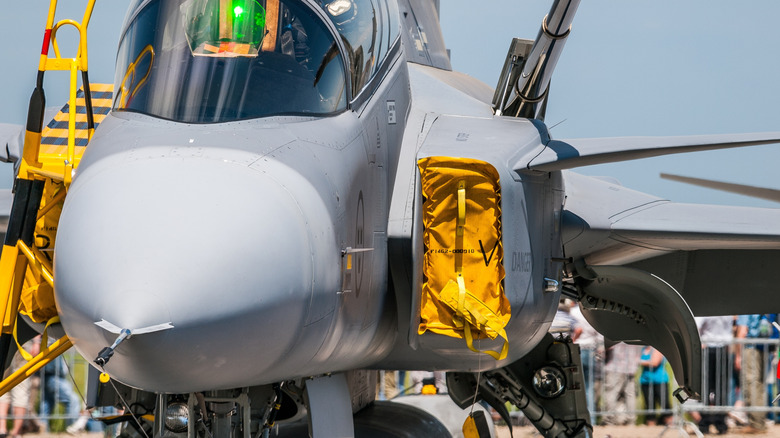Why Don't Modern Fighter Jets Use Nose Intakes Anymore?
Because of their typical role in aerial combat, fighter jet engineering prioritizes speed and agility. To achieve this level of performance, fighter jets integrate aerodynamic form, cutting-edge technologies, and powerful engines that can push it over twice the speed of sound. One of the most important components of a jet engine is its air intake, and its main purpose is to supply air to the engine, which is then compressed and heated to help in combustion and generate the thrust needed by the plane. Throughout its evolution over the decades, the earliest iterations of jet engines had the air intake placed on the nose, but developments in aerodynamics, sensors, and stealth have made this design obsolete.
Today's fighter jets no longer use nose air intakes due to several detrimental effects on aerodynamic performance. The outline and contours of nose-located air intakes can increase drag, decrease top speed, and can form shock waves, which reduce the efficiency of the intake the faster the jet fighter travels. Newer fighter jets are also equipped with more powerful instruments and radars, which are normally located on its nose cone, leaving no space for a nose intake. Lastly, because of its shape and placement, a nose air intake affects the radar cross-section of a fighter jet, making it more visible to enemy systems.
Examples of early fighter jets that use a nose intake are the F-86 Sabre, MiG-19, and the Cold War-era Soviet MiG-21 Fishbed. One of the distinguishing features of the MiG-21 was its use of an adjustable nose air intake that could be extended or retracted depending on its speed. Additionally, the intake configuration had a shock or inlet cone, which generates shockwaves to slow the incoming air to the engine.
Aerodynamic and performance improvement
An important development for fighter jet air intakes was introduced during the late 1960s with the introduction of the variable geometry intake. Compared to the previous static systems, variable air intakes are made to maximize engine airflow and run efficiently for different flight conditions and at various speeds. To manage the airflow, variable geometry air intakes use splitters and diverters, especially while flying at supersonic speeds. Examples of fighter aircraft that use variable geometry intakes include the iconic F-15 Eagle and the F-14 Tomcat.
Today's contemporary fighter jets now feature under-fuselage or side intakes, which help increase maneuverability, decrease engine stall, and improve stealth. Alongside its new location, new fighter jets use a different internal layout for the intake ducting, called the Serpentine duct, which helps maintain a stealthy profile by reducing its infrared signature and minimizing its radar profile. Fifth generation jets, like the highly advanced F-35 Lightning and the Chinese J-20, use a new type of intake called DSI, or Diverter less Supersonic Inlets. Compared to older intake systems that use splitter plates and diverters, DSI compresses and redirects airflow using a bump and forward-swept cowl configuration.
With the arrival of the 6th-generation fighter jets, new aircraft innovations and technologies are expected to emerge. One of the most crucial changes from the previous generation of aircraft is the new power plants that will be installed. The new state-of-the-art adaptive cycle engines are designed for optimum performance in all flight conditions while providing greater range, better fuel efficiency, and a more powerful thrust. While no specifications are available, sixth generation fighter jets will likely incorporate stealth and efficiency in its air intakes, similar to fifth-generation aircraft.

